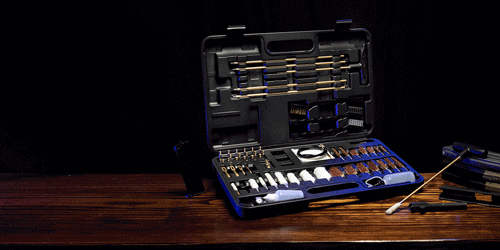Many people, who hike, know that things can get unexpected turns and your hike can change into a night adventure instead of a daylight hike. Whether you're hiking in the dark on your own or in a large group, having light can help keep you safe and ensure you don't lose your way.
Keeping all the scenarios in mind, it’s important to take some time to consider the type of light source you’ll need to stay safe and have fun while hiking at night. As any hiker knows, having the right equipment when you’re out on the trail can make or break your experience, so it’s important to give serious thought to what tools you bring along on your next hike.
What's a headlamp?
A headlamp is an illumination tool that straps to your head so you can free up your hands for other tasks. They range in size, brightness, and adjustability, depending on how much you are willing to spend and how large a focus area you want to be illuminated at any given time. In terms of usage, they are great for activities such as camping, caving, or lighting up dark areas when hiking or biking at night.
What's a flashlight?
A flashlight is a portable handheld lamp with a light-emitting diode (LED) and an incandescent bulb or light-bulb filament, battery, switch, and reflector for illuminating an area at night. The first flashlights were fueled by gas, but modern flashlights use batteries to illuminate LEDs or other electric lights.
Headlamps vs. Flashlights
|
|
Headlamp |
Flashlight |
|
Weight |
Lightweight |
Somewhat Heavy |
|
Portability & Comfort |
Better Comfort |
Less Comfort |
|
Viewing Range |
Limited |
Maneuverable |
|
Durability |
Sturdy |
Sturdy |
|
Charging Options |
Multiple Options |
Wall Charging |
|
Usage of Batteries |
Yes |
Yes |
|
Distress Signals |
Red light for SOS Signals |
Can Send SOS Signals |
|
Price |
Expensive than an ordinary flashlight |
Cheaper |
What question you should ask yourself before choosing between the two
For many people, the term headlamp evokes images of miners in 19th-century America. The truth is that headlamps have come a long way since then, and today are used by everyone from campers to plumbers who need to keep their hands free while they work.
Here are some important questions you should ask yourself before choosing between a headlamp or a flashlight:
1. Are you hiking alone?
A headlamp can save you lots of trouble if you’re hiking alone, particularly at night. Using a headlamp allows you to keep both hands free. It is better than holding flashlight in one hand and using your other hand to help guide yourself or hold on to something. Wearing a headlamp means that you will have both hands free to do any other work without having to worry about dropping the flashlight.
2. How long do you plan to hike?
If you’re hiking in your local mountains or on a short trip into the forest, you might be better off bringing a flashlight. Flashlights have a longer battery life but modern headlamps are starting to give them a very close competition due to advanced technologies. Plus, holding a flashlight can become uncomfortable after long periods of use, as well as impractical for activities that involve keeping both hands free.
3. Are you hiking in a familiar area?
A flashlight is probably fine if you’re hiking in an area that you know well. Or if you’re with a group, it doesn’t matter which one you choose. However, headlamps tend to offer better illumination and are lighter and easier to use than flashlights.
4. Are you hiking in a high-risk area?
When you’re exploring unfamiliar territory or trying to find your way back to camp at night, headlamps can be invaluable. A headlamp is a better choice for high-risk areas, where you want your hands free to tackle any inevitable situation. So, if you plan on spending long periods in an unfamiliar and dangerous area, like a dark cave, then we highly recommend getting a headlamp.
5. Will you need to crawl, swim, or even run during hiking?
If you’re doing any of these activities while camping, headlamps are a better choice. That’s because headlamps are designed to rest on your forehead, which frees up your hands for other activities. For example, you can crawl better with a headlamp. Plus, headlamps provide an even amount of light and focus directly on where you’re looking—which can be incredibly helpful when running at night or traveling through water.
6. Are there any on-site activities during hiking?
While headlamps can be convenient for individual activity, they can become extremely inconvenient when used with a group activity. A flashlight, on the other hand, gives you more freedom of movement and direction in your hands and makes it easier to communicate with your group members. When used together, these two tools are optimal for many different hiking activities.
Top Pick – Gloryfire Tactical Headlamp

The super-bright Gloryfire Tactical Headlamp can light up an entire room and is comfortable to wear. It fits securely without being too tight and it adjusts easily. The light emits bright, white light powered by three batteries. The lamp is also waterproof, making it ideal for use in many situations where water or other liquids might be present.
This headlamp is sturdily built with flexible rubber material, so it won’t break easily. The Gloryfire Tactical Headlamp gives you peace of mind when doing outdoor activities at night or in low-light conditions. It is a lightweight, durable and reliable product making it an excellent option for camping or other outdoor trips.
Key features
- Comes with 1 Maxbright LED white light 100 lumens
- 45 degrees adjustable angle
- Made with rubber paint material
- Has a beam distance of 200 feet
- Features four light colors for low resolution i.e. white, red, blue, and green
- Easy switching to high resolution, low resolution, and red SOS light
- Weight 2.6 oz. (with 3 batteries)
- 8-hours light time
- Waterproof with an IPX4 rating for reliability
Pros
- Sufficient brightness for night time activities
- The light angle is easily adjustable
- Lightweight
- Durable
Cons
- The colored lights are not very bright
Past Topics:





